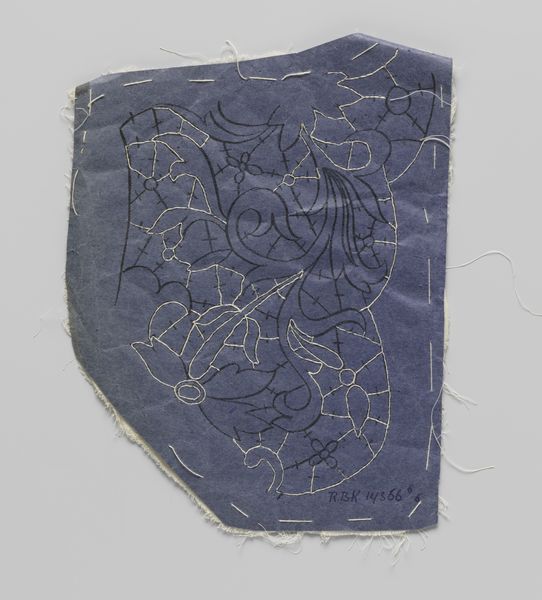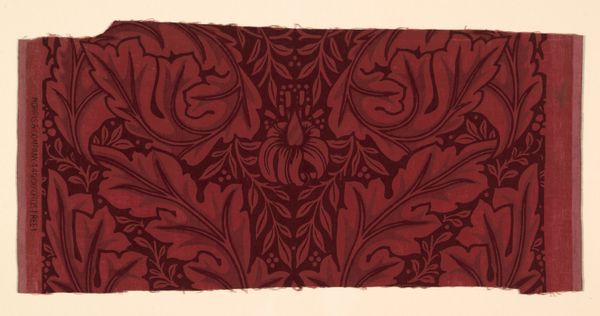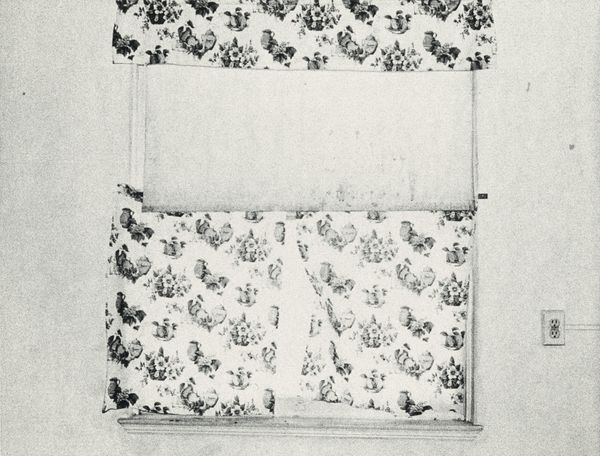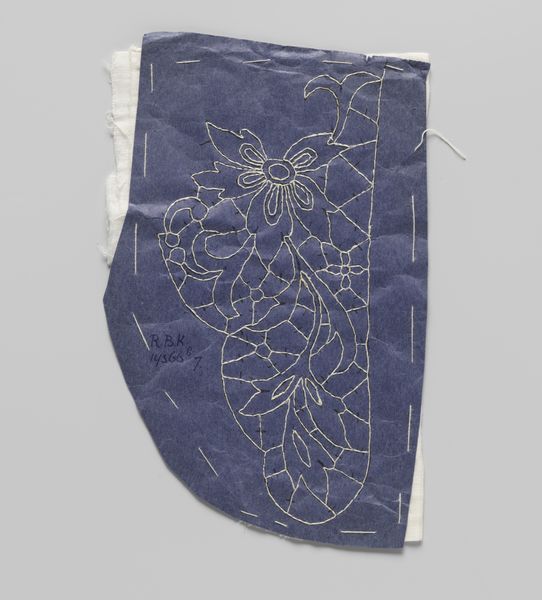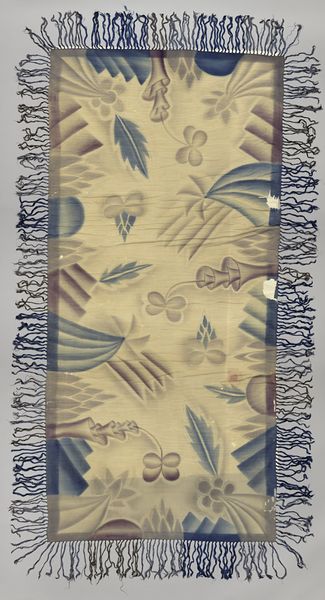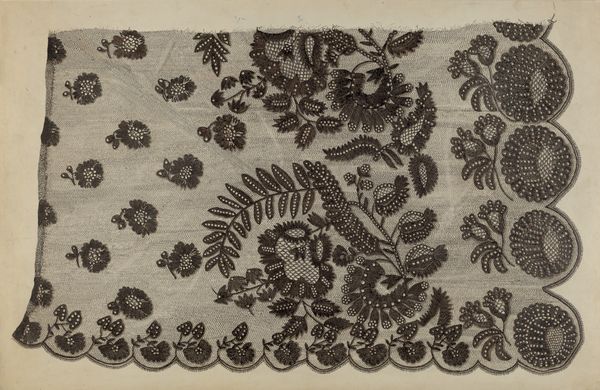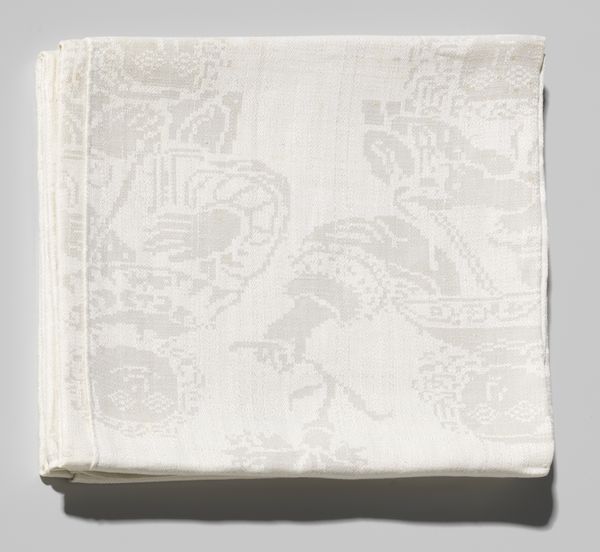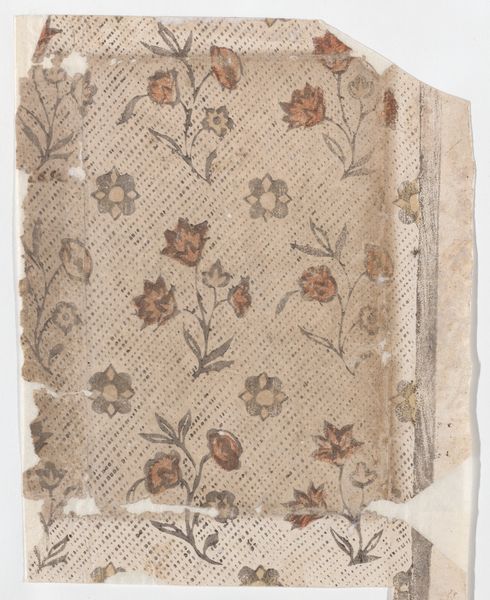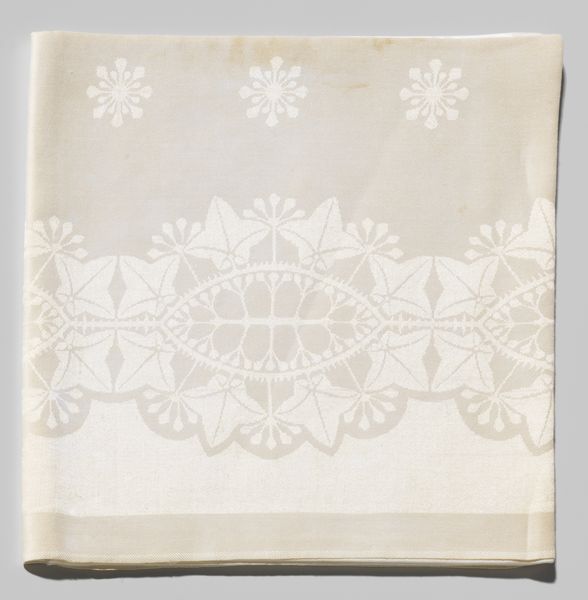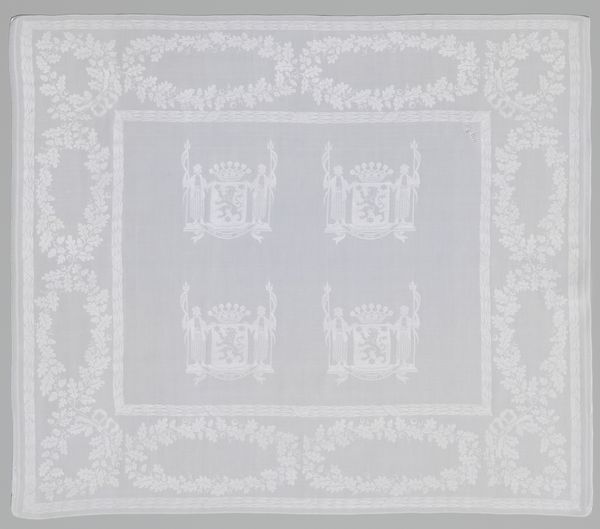
Parasoldek van zwart zijden gaas, onafgewerkt. Het gaas is versierd met applicaties in de vorm een rand die bestaat uit bladeren en klokjesbloemen c. 1875 - 1900
0:00
0:00
gustavschnitzler
Rijksmuseum
fibre-art, weaving, textile
#
underwear fashion design
#
fibre-art
#
fashion mockup
#
weaving
#
textile
#
collage layering style
#
fashion and textile design
#
hand-embroidered
#
embroidery
#
fabric design
#
textile design
#
decorative-art
#
imprinted textile
#
layered pattern
Dimensions: length 50 cm, width 50 cm
Copyright: Rijks Museum: Open Domain
Curator: This intriguing piece, currently housed at the Rijksmuseum, is an unfinished parasol top made of black silk gauze. Created sometime between 1875 and 1900, it showcases delicate applied decoration in the form of leaves and bellflowers. Editor: My initial impression is one of melancholic elegance. The dark fabric and floral patterns evoke a sense of Victorian mourning jewelry, but the sheerness gives it a lightness, a whisper of something almost ephemeral. Curator: Exactly, and let's consider the materiality. This piece speaks volumes about the division of labor in the late 19th century. The intricate hand-embroidery suggests specialized workshops, potentially exploiting female labor to produce luxury goods for the elite. The incomplete state gives the impression that there has been a stop in production perhaps. Editor: Absolutely, this links to larger societal issues around class, gender, and consumption during the Industrial Revolution. The parasol itself was a marker of status, a tool for shielding delicate complexions, embodying ideals of feminine beauty and leisure that were simply unattainable for working-class women. Curator: The production process is fascinating. Gauze weaving is notoriously difficult, requiring specialized looms and highly skilled artisans. And the appliqué work – painstakingly attaching each leaf and flower – is a testament to countless hours of skilled labor. Did the seamstresses use a machine for any part of this task? Or, what do these stitching methods tell us about the degree of separation and social standing in textile-production trades? Editor: We should also look at the semiotics of black. It went from a marker of mourning to becoming increasingly fashionable. The parasol becomes a silent statement about embracing a bold form of individualism. Was it an item made to keep pale, European women 'protected' during the colonization of other lands? Curator: So true, each piece is a testament of those issues of colonialism in the Western world. And one more final note from a technical viewpoint: The choice of black silk gauze amplifies its opacity. If only this incomplete state of the umbrella could further emphasize the economic complexities! Editor: By examining the intended user of this garment as it shields the face from view of onlookers, along with labor and symbolism in tandem we might reveal the interconnected narratives and broader cultural dialogues embedded within something as seemingly innocuous as an unfinished parasol.
Comments
No comments
Be the first to comment and join the conversation on the ultimate creative platform.
